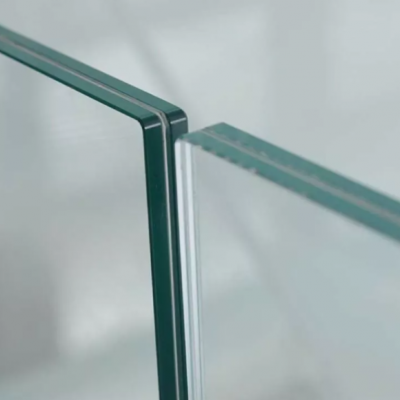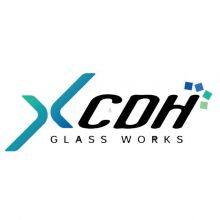Clear Laminated Glass
Clear PVB (Polyvinyl Butyral) Laminated Glass is a type of safety glass made by sandwiching a layer of PVB resin between two or more layers of glass under heat and pressure. This process bonds the layers together, creating a durable and impact-resistant material.

The thickness of the PVB interlayer in laminated glass varies depending on the application, safety requirements, and performance needs (such as impact resistance, sound insulation, or UV protection). Here are the standard PVB thickness options and their typical uses:
Standard PVB Thickness Options:
1) 0.38 mm (15 mils)
① Commonly used in automotive windshields (usually two layers, totaling 0.76 mm).
② Basic safety glass for architectural applications.
2) 0.76 mm (30 mils, most common)
① Standard for architectural laminated glass (e.g., windows, facades, railings).
② Balances safety, clarity, and cost-effectiveness.
3) 1.14 mm (45 mils)
① Used for enhanced impact resistance (e.g., hurricane-prone areas, security glazing).
② Better sound insulation than 0.76 mm.
4) 1.52 mm (60 mils) and above
①High-security applications (e.g., banks, bullet-resistant glass when combined with multiple layers).
② Acoustic glass for superior noise reduction.
Multi-Layer PVB Configurations:
1) For bulletproof or blast-resistant glass, multiple PVB layers (e.g., 2.28 mm, 3.04 mm) are used between glass panes.
2) Acoustic PVB (specialized sound-dampening interlayers) may vary in thickness for better noise control.
Key Considerations When Choosing Thickness:
1) Safety: Thicker PVB (1.14mm+) improves impact resistance.
2) Soundproofing: Acoustic PVB (1.52mm+) reduces noise better.
3) Security: Multiple PVB layers (e.g., 2.28mm+) enhance protection.
4) Structural Load: Thicker glass (8mm+) is needed for overhead glazing.
Key Features of PVB Laminated Glass:
1) Safety & Security:
① If broken, the glass fragments adhere to the PVB interlayer, reducing the risk of injury from sharp shards.
② Provides resistance against forced entry and vandalism.
2) Sound Insulation:
The PVB layer dampens sound, making it ideal for noise reduction in buildings near highways or airports.
3) UV Protection:
Blocks up to 99% of harmful UV rays, protecting interiors (furniture, flooring, etc.) from fading.
4) Structural Strength:
More resistant to wind, impact, and blast pressures compared to standard glass.
5) Design Flexibility:
Available in various tints, colors, and thicknesses; can be combined with tempered or heat-strengthened glass.
PVB Laminated Glass Comparison with Other Laminated Glass Types:
1) PVB vs. EVA (Ethylene-Vinyl Acetate): PVB is more common in automotive and architectural uses, while EVA is used in decorative glass.
2) PVB vs. SGP (SentryGlas Plus): SGP is stronger and used in high-load applications like overhead glass.
PVB laminated glass is a versatile, high-performance solution combining safety, durability, and aesthetic appeal.
Common Applications:
1) Automotive: Windshields (mandatory in most countries for safety).
2) Architectural: Skylights, facades, balconies, railings, and hurricane-resistant windows.
3) Security Glass: Banks, museums, and high-risk areas.
4) Noise Control: Buildings near traffic or industrial zones.
Contact us:
Xingchen Dahai(Hubei) Glass Co., Ltd
Phone: 86-15392968262 Caicai
Website:

Send Inquiry to This Supplier
You May Also Like
-
SGP Laminated GlassNegotiableMOQ: 50 Square Miles
-
Semi-Tempered GlassNegotiableMOQ: 50 Square Miles
-
Heat Soaked GlassNegotiableMOQ: 50 Square Miles
-
Shower GlassNegotiableMOQ: 50 Square Miles
-
Low E Coated GlassNegotiableMOQ: 50 Square Miles
-
Clear Low e GlassNegotiableMOQ: 50 Square Miles
-
Tempered Low e GlassNegotiableMOQ: 50 Square Miles
-
Low-e Tempered GlassNegotiableMOQ: 50 Square Miles
-
Float Insulated GlassNegotiableMOQ: 50 Square Miles
-
Greenhouse GlassNegotiableMOQ: 50 Square Miles







